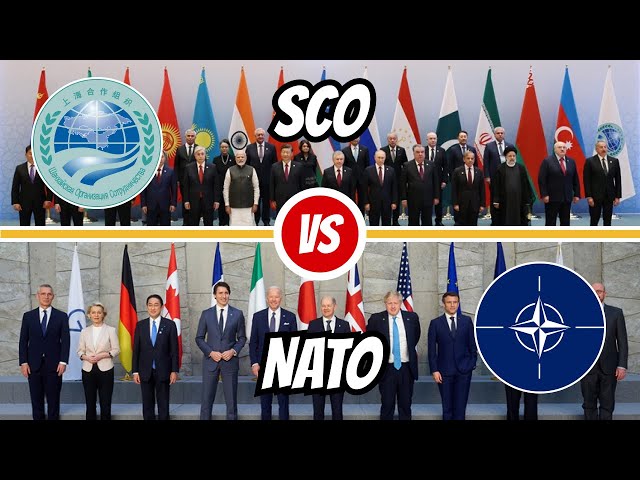
Recently, two significant summits focusing on European and Asian security were held — the NATO Summit and the Shanghai Cooperation Organisation summit. The SCO summit embodied the principle that national security is indivisible and that security and development are intertwined. This stands in stark contrast to NATO’s concept of indivisible security.
NATO’s 75th anniversary summit took place in Washington, where, aside from urging member states to increase military spending and support Ukraine, the most notable aspect was engagement on Asian security. To this end, the summit invited leaders from the Indo-Pacific Four to attend (IP4: Japan, South Korea, Australia, and New Zealand).
In recent years, the notion of Eurasian indivisible security has gained traction. The United States has encouraged its primary Eurasian allies to enhance military security cooperation in response to perceived strategic threats from China and Russia. Japan has repeatedly asserted that “Europe of today may be Asia of tomorrow.” Moreover, small multilateral mechanisms such as the U.S.-Japan-South Korea and U.S.-Japan-Philippines alliances have linked the Ukraine crisis with the security of the Taiwan Strait, the Korean Peninsula and the South China Sea.
In contrast, the SCO Summit, held in Kazakhstan, issued the Astana Declaration, which stated the following:
“They consider it unacceptable to try to ensure their own security at the expense of the security of other states. … The Member States consider it necessary to increase the role of the SCO in creating conditions for strengthening global peace, security and stability, as well as building a new democratic, fair, political and economic international order.”
The SCO summit’s principles highlight that national security demands are indivisible and that security and development are intertwined. This is fundamentally different from NATO’s concept of indivisible security.
First, the primary distinction between the two security concepts lies in the way they perceive security threats. NATO and some of America’s Asia-Pacific allies view China and Russia as the greatest threats to regional security. They believe that a victory for one would embolden the others to engage in “adventurism” and that cross-regional military defense integration is necessary to maintain security. In other words, NATO sees security threats as external.
Conversely, the SCO’s primary security goal is to ensure the political stability and economic and social development of its member states. The SCO identifies the main security threats as domestic and regional terrorism, extremism and separatism — the “three evil forces.” This stance implies that forming binding military alliances is not only an inappropriate solution but could also provoke unnecessary regional tensions. Therefore, the SCO consistently emphasizes non-alignment, non-targeting of other countries or regions and openness to external partnerships.
China, through the Belt and Road Initiative, aligns its development strategies with those of Central Asian countries, addressing the roots of insecurity through economic development.
Second, the notion of an Asian version of NATO with a collective defense mechanism has historically been unsuccessful. In the aftermath of the Ukraine crisis, some argue that the war occurred precisely because Ukraine did not join NATO, claiming the mistake was not NATO’s eastward expansion but its slow pace. They further suggest that Asia, without a NATO-like collective defense organization, is in even more peril. Some also propose that while Asia may not be able to establish a NATO-like collective defense organization now, it can still achieve a semblance of collective defense through smaller multilateral alliances.
But a look at Asian history reveals that opposition to collective defense and the concept of promoting security through development are not new, nor did they originate with the SCO. In the 1950s, the Southeast Asia Treaty Organization (SEATO) — modeled after NATO by the United States — included only two Southeast Asian countries and ultimately dissolved. ASEAN, established in 1967, has opposed collective defense from the start because its member states recognized that the greatest security threats to newly independent nations were the ethnic and religious issues left over from colonial times and the political and social instability caused by economic underdevelopment. Addressing these internal security threats with military alliances is futile and would divert valuable resources into a bottomless pit.
Third, NATO is the product of a specific historical context in Europe during the Cold War. Its concept of indivisible security is limited to its member states. Treating NATO’s experience as a universal standard is both cognitively biased and misleading from a policy standpoint. Analysts often compare NATO’s military strength with the perceived weakness of organizations like the SCO and ASEAN to argue for NATO’s effectiveness and superiority. However, the SCO and ASEAN have a far more successful track record in promoting regional security. Their principles of equal and indivisible national security interests, along with the inseparable nature of economic development and security, are far more advanced than the exclusive security concept of NATO.
The differences in security concepts showcased by the two recent summits will become more pronounced with the rise of the Global South. There is every reason to believe that the new security concepts represented by the SCO and ASEAN will increasingly become mainstream in the international security arena.
